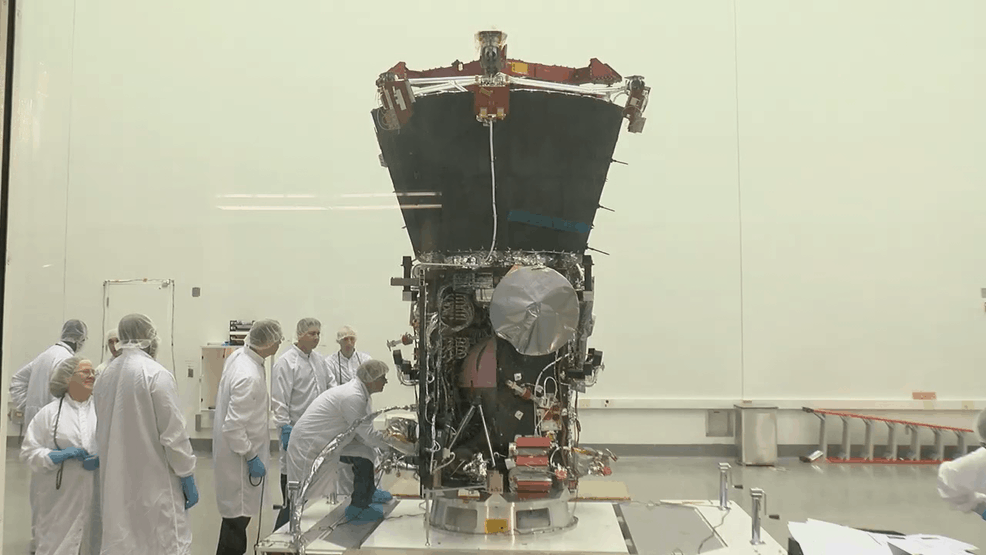
Scientists at NASA’s Goddard Space Flight Center could hardly contain their excitement.
Finally, after 60 years of dreaming, planning and hard work, they unveiled a new solar probe that will bring mankind closer to the sun than ever before.
“It is the coolest, hottest mission under the sun,” grinned project Scientist Nicky Fox. “It’s going to explain to us how a star works.”
The Parker Solar Probe is now in its final stages of testing.
The spacecraft will use Venus’s gravity like a slingshot to establish a 450,000 mile-per-hour orbit around the sun.
Scientists say during 24 orbits, the Parker probe will come within 4,000,000 miles of the sun’s superheated surface.
“As soon as we launch, we step into a medium that we’ve never been before,” said project scientist Nour Raouafi. “Every measurement we make is a potential discovery.”
The seven-year, $1.5-billion mission has a July 31 targeted launch date.
“We can go up and visit our own neighbor, and kind of better understand stars throughout the universe,” said Fox.
The 1,400-pound spacecraft, made of titanium and aluminum, will be protected from the sun’s heat by a series of 4-and-a-half inch thick carbon panels.
Scientists are expecting the probe will endure temperatures of about 1,200-degrees.
Inside they say, the payload interior will be kept to a moderate 80 degrees.
“There’s a carbon composite, which is a lot like the graphite epoxy you might find in your golf clubs,” Heat Shield Lead Engineer Betsy Congdon explains. “But it’s been superheated and there’s also carbon foam.”
A white coating also keeps the spacecraft relatively cool.
The probe will travel through the sun’s corona, usually seen only during a total solar eclipse.
The NASA Goddard team hopes to learn why that fiery halo is three-hundred times hotter than the sun’s surface.
That goes against the laws of physics, Fox says.
She uses the example of the heat from a campfire fading as a person walks away.
But with the corona, it’s exactly the opposite.
“The sun is central to our everyday life. It isn’t just a point in the sky,” said Fox. “Obviously, it gives us light and heat, and it enables us to be alive on this planet, but it also has all these mysteries.”
Researchers also want to learn more about solar wind, the energized particles hurled from the sun at millions of miles per hour.
Solar wind can affect the earth’s magnetic field, cause destructive power surges and damage satellites.
“The exciting thing is that we will learn about phenomena that we discovered decades ago, and we don’t understand them yet,” said Raouafi . “If you think of a star, it’s nothing like a planet, it’s nothing like a moon. A star is alive, every second.”
Now, just months away, the Parker Probe will be heading for earth’s nearest star. Searching, ever searching for knowledge and answers.
Congdon says she’s glad to be along for the ride.
“No one person with unlimited knowledge and time could build a spacecraft,” she smiled. “It really takes a team, it takes hundreds of people. To be experiencing this and seeing it all come together, it’s indescribable, to be honest.”
























